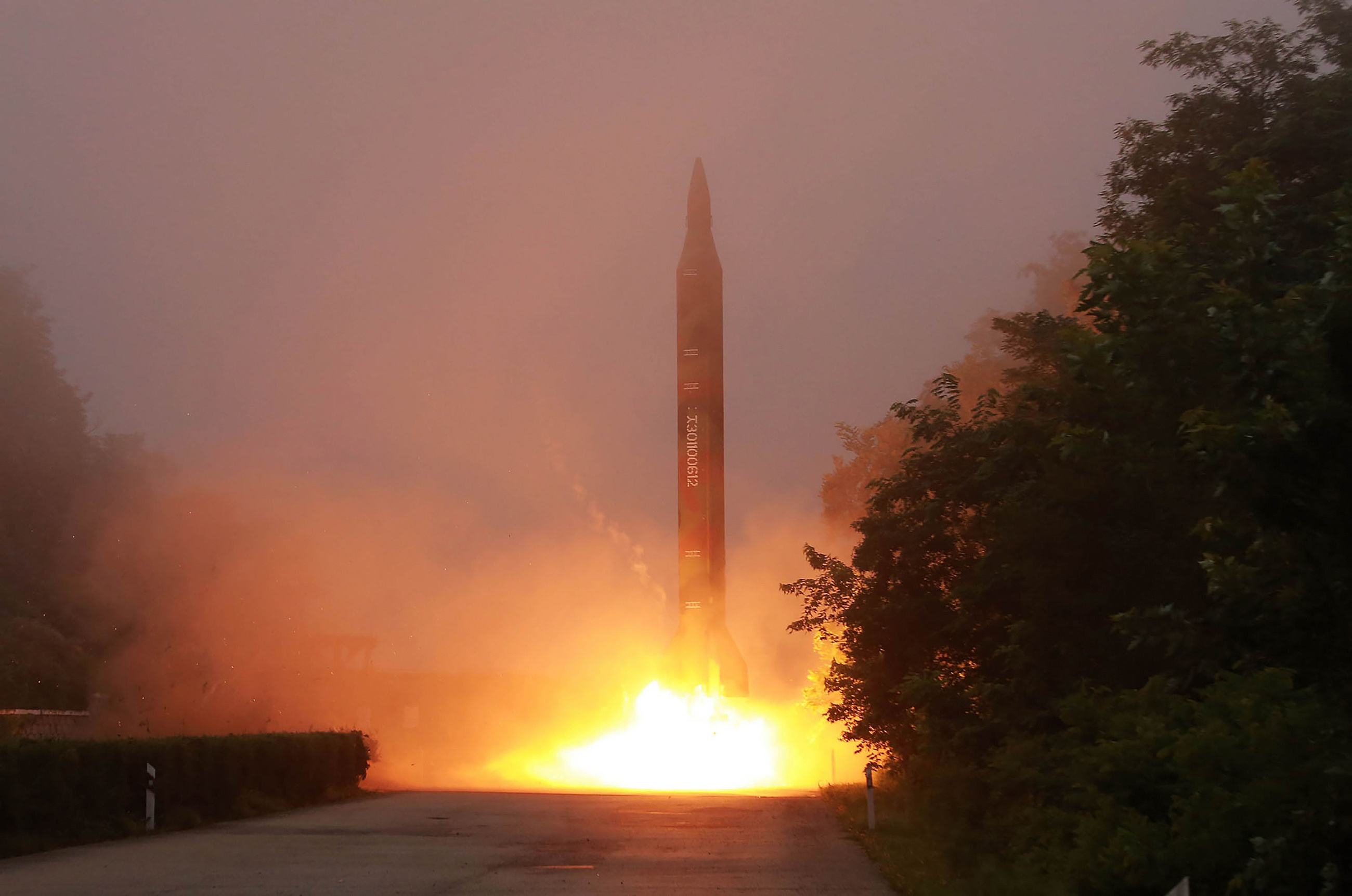
North Korea said on July 20 its latest ballistic missile tests trialled detonation devices for possible nuclear strikes on US targets in South Korea and were personally monitored by supreme leader Kim Jong-Un. / AFP PHOTO /
SEOUL, South Korea (AFP) — An explosion almost immediately after launch was behind the failure of North Korea’s latest test-firing of a powerful medium-range missile, the South Korean military confirmed Monday.
North Korea tested a Musudan missile — capable of hitting US bases as far away as Guam — shortly after midday Saturday near an air base in the northwestern city of Kusong.
Such launches are usually reported within a few hours or even minutes by South Korean and US military monitors, but the news of Saturday’s test only came out around 16 hours after the event.
“North Korea’s missile launch failed shortly after lift-off so a considerable amount of time was needed to analyse it,” a South Korean Joint Chiefs of Staff official told reporters Monday.
A defence ministry spokesman confirmed the missile exploded soon after lift-off, in the very initial stage of the launch.
First unveiled as an indigenous missile at a military parade in Pyongyang in October 2010, the Musudan has a theoretical range of anywhere between 2,500 and 4,000 kilometres (1,500 and 2,500 miles).
The lower estimate covers the whole of South Korea and Japan, while the upper range would include US military bases on Guam.
After a string of five failed launches, North Korea test fired a Musudan in June that flew 400 kilometres into the Sea of Japan (East Sea). Saturday’s test weas the first since then.
The June flight had been hailed by leader Kim Jong-Un as proof of the North’s ability to strike US bases across “the Pacific operation theatre”.
US weapons analysts say successful Musudan testing could help the nuclear-armed North develop an operational intercontinental ballistic missile (ICBM) capable of striking the US mainland by 2020.
© 1994-2016 Agence France-Presse







